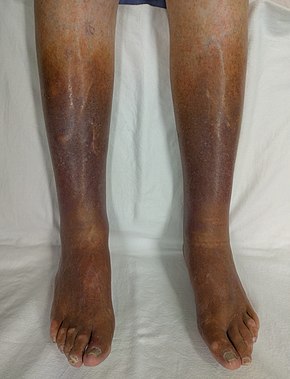About La Jolla Vein Care
This author has not yet filled in any details.So far La Jolla Vein Care has created 122 blog entries.
24, 10, 2015
WORLD THROMBOSIS DAY
La Jolla Vein Care2021-11-03T23:42:59-07:00WORLD THROMBOSIS DAY
Recognized on 13 October, World Thrombosis Day (WTD) focuses attention on the often overlooked and misunderstood disease of thrombosis. With hundreds of educational events in countries around the world, WTD and its partners place a global spotlight on thrombosis as an urgent and growing health problem.
Thrombosis is the formation of potentially deadly blood […]
What’s So Great About the Great Saphenous Vein?
La Jolla Vein Care2022-04-24T23:30:58-07:00
The great saphenous vein (GSV), previously referred to as the long saphenous vein, is a superficial leg vein that runs from the top of the thigh near the groin, down the inner thigh all the way to the inner ankle. The top blue arrow […]
9, 9, 2015
Live Demonstration: How To Wear Compression Stockings
La Jolla Vein Care2015-09-09T14:33:31-07:00Need help putting on your compression stockings or want useful tips? Watch this video. Go to La Jolla Vein Care’s Youtube channel for more videos.

Foam Sclerotherapy Procedure Video
La Jolla Vein Care2015-09-09T14:30:36-07:00Curious how foam sclerotherapy works? Watch an animation here. For more vein procedure videos, go to La Jolla Vein Care’s Youtube channel.

Sclerotherapy Procedure Video
La Jolla Vein Care2022-01-04T04:36:09-08:00Are you curious how sclerotherapy is performed? To view more vein procedure videos, go to La Jolla Vein Care’s YouTube channel.

6, 8, 2014
DVT (Deep Venous Thrombosis) Afflicts American Idol
La Jolla Vein Care2014-08-06T01:09:47-07:00On Friday, former American Idol contestant Michael Johns suddenly died at age 35, allegedly from a blood clot that formed in his ankle. No official details have been released, but TMZ is reporting that Michael Johns twisted his ankle. Other celebrities who have made relatively recent headlines for suffering from DVT include Real Housewives of Atlanta star, […]
What is a Superficial Thrombophlebitis?
La Jolla Vein Care2022-01-03T12:52:21-08:00A thrombophlebitis is swelling and inflammation of a vein caused by a blood clot. There are two main types of thrombophlebitits: deep venous thrombosis (affects deeper, larger veins) and superficial thrombophlebitis (affects veins near the skin surface). This is often referred to as an STP.
The following symptoms are often associated with thrombophlebitis:
- Inflammation (swelling) in […]
Have Tea with the Vein MD August 11th
La Jolla Vein Care2021-11-04T15:19:57-07:00La Jolla Vein Care is announcing their new ‘Tea with the MD’ series of educational seminars for patients to learn more about varicose veins, what causes them, what’s new in treatment, etc. Dr. Bunke will be kicking off the first seminar Monday, August 11th. This is an opportunity to ask the doctor all of your […]




